Looking for a sunny, affordable retirement destination in Spain that isn’t overpriced like Barcelona or Valencia? What if I told you there are Spanish cities with amazing weather, high quality of life, and low, low prices—without the tourist crowds? You don’t have to spend a fortune to retire in Spain.
All you need is to take a closer look at certain Comunidades Autónomas that I will tell you today. There you will find spectacular cities with standards of living comparable to the best places in Europe. Among these regions, you’ll discover vibrant local cultures, stunning landscapes, and a rich history that enhances the overall quality of life. In fact, these hidden gems are often recognized as some of the best countries for retirement, attracting expatriates from around the world. Whether you seek a bustling urban environment or a tranquil coastal retreat, these Comunidades Autónomas offer diverse options to suit every preference.
And it gets even better, because some of these autonomous communities will offer you very special tax incentives. Retiring in Spain doesn’t mean choosing between expensive cities or isolated villages—you just need to know where to look and who to talk to. While the allure of sunny beaches and vibrant culture is undeniable, it’s essential to consider the drawbacks of living in Spain, such as bureaucratic red tape and varying healthcare quality in different regions. Additionally, language barriers can present challenges for expatriates, making it crucial to immerse yourself in the local culture and perhaps learn the language. However, with the right preparation and advice, many find these challenges manageable and well worth the benefits of their new life in Spain.
So today, we will show you the best places to retire in Spain in all autonomous communities except three: So today, we will show you the best places to retire in Spain in all autonomous communities except three. Spain offers a mix of stunning landscapes, rich culture, and affordable living that makes it a favorite among retirees. Unlike its neighbor, there are specific reasons why retirement in France is tricky, such as higher property taxes and a more complex bureaucracy, which often make Spain the more appealing choice for those seeking a relaxed lifestyle.
- Andalusia, which we already covered in this article.
- Catalonia, which is a quite complex region, so we might cover it in a future article.
- Valencia, which we already covered in this article.
If you want us to write an article about Barcelona and Catalonia, tell us in the comment section.
Aragon
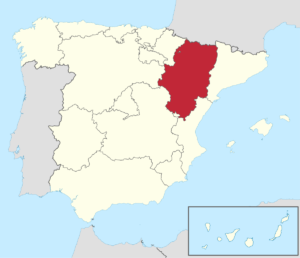
Aragon is a region in northeastern Spain, bordered by France to the north and Catalonia to the east.
Known for its diverse climate, this is not the region for those looking for mild winters. For example, the capital, Zaragoza, is cold in the winter—temperatures below zero are not uncommon. Some people say that it is even colder than Madrid! One curious fact is that part of the Pyrenees mountain range is inside this region, and they have some interesting ski resorts. The most famous of them is Formigal, which is also the largest in Spain.

Contrary to some of the regions that I will talk about in a few minutes, Aragon does not offer any specific tax benefit for expats. However, several factors make Aragon an appealing destination for foreign retirees. First, it is one of the most developed parts of Spain, and the capital, Zaragoza, has excellent infrastructure for a city of its size. It is also the third safest autonomous community in Spain, being 43% safer than Valencia, for example. While it is far from being the cheapest autonomous region, some services like private healthcare have good quality and relatively low prices.
Public transportation is efficient, and the road infrastructure is well-maintained, making it easy to travel within the region. Aragon is also less crowded than more tourist-heavy parts of Spain, offering a quieter and more relaxed pace of life.
Recommended Cities in Aragon
The best places in Aragon for an expat pensioner or retiree are the capital, Zaragoza, which has very good infrastructure but at the same time is not so big to cause the stress of a large city.

There is also a smaller town called Huesca, with only 52,000 residents. Huesca combines a small-town atmosphere with essential modern conveniences. The local supermarkets, pharmacies, and banking services are easily accessible.
One of the greatest advantages of Huesca is the healthcare quality. The main local public hospital, Hospital San Jorge, is modern and well-equipped. For those who prefer private healthcare, there are several private clinics that offer services at lower rates than larger metropolitan areas.

Huesca is just an hour away from Zaragoza by train, which has an international airport so you can fly elsewhere in Europe. Huesca’s proximity to the Pyrenees mountains is a major advantage for those who enjoy outdoor activities, like me!
It is a very safe city due to its smaller size, and the biggest negative aspect that locals mentioned is that it can get boring sometimes. The cost of living there is quite low since it is a small city, and this translates to much lower housing costs. The city has plenty of apartments available for sale for less than €100,000, like this fully-furnished 3-bedroom apartment available for only €93,000.
Asturias
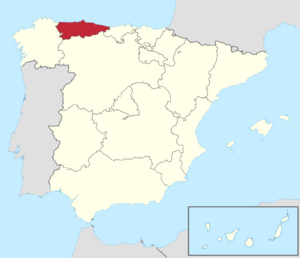
Asturias is a region in the northwest of Spain, bordered by the Bay of Biscay and the Atlantic Ocean to the north. For expat retirees, one piece of good news is that Asturias has a regional inheritance and gift tax system that can be favorable for those who plan to transfer assets or estates to heirs living in the region.
Asturias does have a downside: it is quite rainy—very different from the Mediterranean climate of Southern Spain.
Recommended Cities in Asturias
The best cities in the community are Oviedo and Gijón, and only 24 kilometers separate the two cities.

But they have some striking differences.
Oviedo is the capital of the autonomous community of Asturias and is not exactly at the shore, but inland. It offers a balance between a relaxed lifestyle and the amenities of a mid-sized city—Oviedo has around 220,000 residents. It has a rich cultural scene for a city of its size and a walkable city center.

The public healthcare system is highly regarded, and the city has well-equipped hospitals such as Hospital Universitario Central de Asturias (HUCA), one of the largest and most advanced hospitals in Spain. Expats who obtain residency can access public healthcare at minimal cost, while private health insurance is also affordable. Oviedo provides a relatively low cost of living compared to other European cities. Renting an apartment in the city center can cost around €500-€700 per month.
This is what a local told us about Oviedo:
“I’ve been living in Oviedo almost my whole life. It is a great city to live in. It’s literally the cleanest in Spain, and I would say it’s pretty safe.”
Another city in Asturias that is a recommendation for anyone planning to retire in Spain is Gijón.
It is slightly bigger than Oviedo, with more than 270,000 residents, and just at the seaside. Gijón has several well-maintained beaches, such as Playa de San Lorenzo, ideal for those who enjoy coastal living. The city also has numerous parks, such as Cerro de Santa Catalina, perfect for leisurely walks with scenic views of the Cantabrian Sea.
The Asturias Airport is only 40 minutes away, and it is a hub for a low-cost airline called Volotea. So, from there, you can travel to multiple airports in Spain and Europe for affordable prices. For €99,500 you can buy a 3-bedroom apartment there, just a five-minute walk from the Arbeyal beach.
Balearic Islands
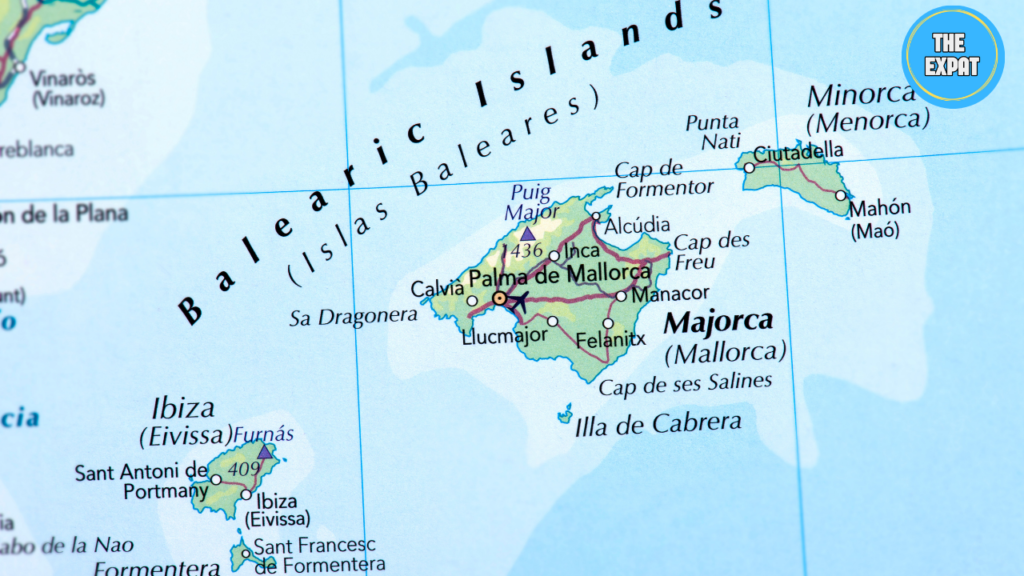
The next autonomous community is the Balearic Islands, and here we are in for a bit of controversy for a few reasons. First, this is actually the second most expensive autonomous community in Spain, just after Madrid. Second, recently there were some protests in the Balearics’ largest city, Palma, due to the influx of foreigners, which, according to the locals, is causing inflation.
That aside, there are also many attractive factors there. This archipelago enjoys a Mediterranean climate, with mild winters and hot, sunny summers, making it an appealing destination for millions of tourists. I travel there for holidays once or twice per year, and I have never had a bad time. The weather is really special there.
However, this is also what makes this place so expensive. One of the key financial attractions for foreign retirees in the Balearic Islands is the potential for favorable tax treatment. They have lower inheritance and gift taxes and tax breaks for investing in sustainable, energy-efficient properties.
Recommended Cities in the Balearic Islands
For retirees, the best places in the archipelago are the cities surrounding Palma de Mallorca, since it has the bulk of the infrastructure and services. Palma also has a large airport, the third largest in Spain in terms of passengers, with connections to nearly all European capitals.
In a city called Can Pastilla, just a few kilometers from Palma, you can buy a 40sqm flat for €169,000. It might seem expensive compared to other parts of Spain, and it is—but hey, at least you are just two blocks away from the beach.
Canary Islands
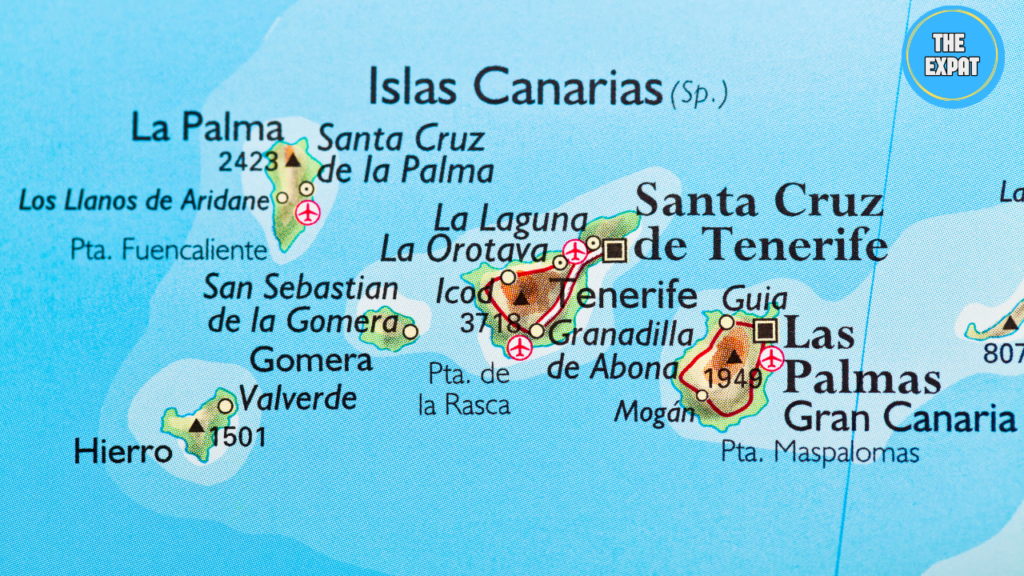
The next autonomous community is also an archipelago, but it is much cheaper than the Balearic Islands. It is the Canary Islands, located off the northwest coast of Africa in the Atlantic Ocean. Known for its subtropical climate, it is one of those places where even in the middle of winter, you can sunbathe at the beach.
One curious aspect of these islands is that they are an economic special zone with multiple tax benefits. For example, the Value Added Tax (or VAT) there is only 7%, in comparison to the 21% VAT in the rest of Spain. They also offer reduced income taxes for professionals relocating here and reduced property transfer tax for buyers.
Recommended Cities in the Canary Islands
The two best cities for retirees are also the two biggest in this archipelago: Las Palmas de Gran Canaria and Santa Cruz de Tenerife. Las Palmas de Gran Canaria is bigger, with almost 380,000 residents, and the infrastructure there is more robust.
As the largest city in the Canary Islands, Las Palmas offers all the amenities retirees need, from healthcare to international schools (if you bring young family members). It also has a vibrant expat community and a blend of cultural activities. With its coastal location, retirees can enjoy both urban conveniences and beachside relaxation.
Las Palmas has a sizable expat community, particularly from the UK, Germany, and Scandinavia. Language schools and community centers offer Spanish classes specifically designed for foreigners, helping expats to integrate. Las Palmas is just 20 minutes from Gran Canaria International Airport, with flights to numerous destinations.

One of the downsides of Las Palmas is public transport—the buses, operated by Guaguas Municipales, are often extremely crowded. You can buy a 3-bedroom apartment in Las Palmas for €107,000, which is less than $120,000. If you prefer to rent, for €670 (or $750), you can rent a furnished apartment.
This is what a resident told us about Las Palmas:
“Amazing place! Very laid-back lifestyle, good internet, relatively cheap (because of the island’s lower taxes), lots to see and do, only a ferry ride away from the other islands, and a cheap plane ticket to Europe. It can get a bit windy and cold sometimes in the winter but not horrible. LOTS of tourists in the south, more local in the north.”
Cantabria
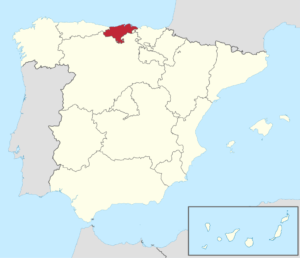
The next autonomous community is less famous, but it also has plenty of pros—Cantabria. Cantabria is in northern Spain, located between Asturias and the Basque Country. It has a climate similar to Asturias: mild summers and wet winters.
The biggest downside of this autonomous community is that it is the most violent in Spain, with a homicide rate of 1.03. However, to put it into perspective, while being the most “violent” Spanish community, if Cantabria were a state in the US, it would be the safest, being safer even than Maine!
One key benefit here is the non-habitual residence (NHR) tax regime, specific to certain regions in Spain, including Cantabria. This allows foreign retirees to enjoy reduced tax rates or even tax exemptions on pensions earned outside of Spain for up to 10 years. Additionally, there are municipal tax reductions in some Cantabrian cities, such as property tax relief for pensioners.
Recommended Cities in Cantabria
The most recommended city in this autonomous community is Santander. Despite being the regional capital, it is not a big city, having only 172,000 residents. A size that is often considered the perfect balance between the conveniences of urban life and a laid-back lifestyle.
This is not the kind of city where you’ll find many expats and tourists, but mostly locals. Therefore, remember that learning Spanish here will be extremely helpful to enjoy what Santander offers to its residents. And it offers a lot!
The Cabárceno Natural Park, just outside the city, is a large wildlife park with scenic landscapes and animals in semi-wild habitats. Inside the city, Santander has an excellent healthcare infrastructure. The Hospital Universitario Marqués de Valdecilla is one of the top public hospitals in Spain, offering a wide range of medical services. Private healthcare is also available, with options like Hospital Santa Clotilde providing alternatives for those with private insurance.
The public transport system is reliable and easy to navigate, and for regional travel, the Renfe train network and ALSA buses provide quick connections to other cities in Spain. One thing that I found curious is that Spaniards from other parts of the country are very fond of Santander, like one that told us:
“It is a very stunning city. Been all over Spain and it’s one of my favorite places (close call with Málaga). Has a lovely, small-town vibe in the old city. You can walk endlessly on the promenade. The beaches are very lovely. People are very kind, but prepare to speak Spanish.”
With €91,500, or $102,000, you can buy a 2-bedroom flat in Santander, close to the University area and just a few minutes’ walk from Sardinero beach. If you prefer to rent, with just €600 you can live in a 2-bedroom apartment in the same area.
Castile and León
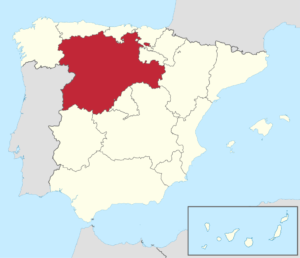
From Cantabria, we jump to Castile and León, a landlocked autonomous community located in the northwestern part of Spain, bordered by regions like Asturias, Galicia, and also by Portugal. The region is famous for two things.
First, for the fact that it does not have a capital—at least not officially. Second, because of its agriculture, particularly in the Ribera del Duero wine-producing area. Expat retirees in Castile and León can enjoy easy access to fresh, locally sourced food and wines at lower prices than those available in larger cities or more touristic regions.
On the financial side, one advantage of Castile and León is the regional reductions on inheritance and gift taxes, which can be highly beneficial for retirees looking to transfer wealth to family members. Castile and León apply reductions based on the degree of kinship and the value of the inheritance. The local government also provides incentives for property purchases in rural areas, which could lead to reduced property taxes for retirees willing to settle in smaller towns within the region.
One of the best highlights of Castile and León is that it is very safe—in fact, the second safest region in Spain, with a homicide rate of 0.33 per 100,000 residents per year. The biggest downside of this region is that the winters are relatively cold since most of Castile and León is located in the Inner Plateau, a high region of Spain.
Recommended Cities in Castile and León
The two most recommended cities for expats in Castile and León are León and Salamanca. León is smaller, with close to 128,000 residents, and much of its essential infrastructure and amenities are within walking distance. This is ideal for retirees who may not wish to rely on a car. The city center, commercial districts, and medical facilities are all easily accessible on foot or by using the local bus system, which offers reduced fares for seniors.
It is also a city with considerably lower costs—even properties within the old town, near key historical landmarks like the León Cathedral or the Casa Botines, are relatively inexpensive. The high-speed AVE train connects León to Madrid in just over two hours.
Castilla-La Mancha
From Castile and León, we jump into another region with a very similar name but even cheaper: Castilla-La Mancha. In fact, this region has the lowest housing costs in Spain! The average price of a home there is around one-third of the price in Madrid, for example.
Castilla-La Mancha is the largest wine-producing region in Spain. And as you might know from our article about Tuscany, where there are wineries, there is good weather, because we, humans, benefit from the same climate as vineyards.
One could even call Castilla-La Mancha the Tuscany of Spain—the similarities are plenty. Both regions boast vast, rolling landscapes dominated by orchards and olive groves, creating an iconic countryside. Additionally, the architecture in both areas reflects a rich historical heritage, with medieval towns, hilltop villages, and centuries-old windmills or towers dotting the landscape, evoking a timeless charm that is captivating.
In both cases, the cuisine is also an attraction: Castilla-La Mancha is famous for its Manchego cheese and lamb dishes, all produced locally.
Recommended Cities in Castilla-La Mancha
The largest city in Castilla-La Mancha is Albacete. However, it has mixed reviews from residents regarding how good it is for an expat. The city that receives the highest recommendations is Toledo, a much smaller city, with less than 86,000 residents.
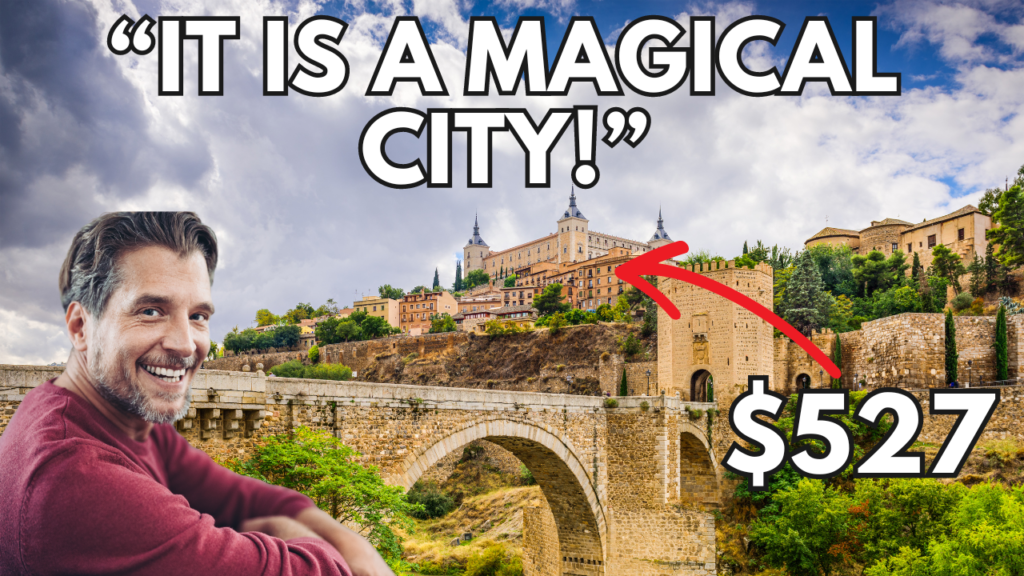
The city’s compact nature makes it easy to walk or cycle to most destinations, so a car is mostly unnecessary. It is a city with a Mediterranean climate with hot summers and mild winters. It is a good place for those who prefer warmer weather, though summer temperatures can rise above 40°C, which might require air conditioning.
Toledo is only about 30 minutes away from Madrid by high-speed train (AVE), so anyone living in Toledo has access to all the infrastructure, healthcare, and perks that Madrid offers while living in a more relaxed, historical setting, and paying much lower prices—if you do not live in the historic center, of course. The historic center is considerably more expensive because Toledo is a city with a very high tourist appeal, receiving thousands of people every year. On the other hand, the outskirts of the city have very good prices for everything.
This is what a resident told us:
“Toledo is a magical city. It’s also heavily over-touristed, so eating out in the casco (historic center) is pricy, like crazy tourist prices. But other parts of Toledo and nearby pueblos are a steal. Groceries are CHEAP compared to Madrid. Cañas/beer/wine…cheap!”
In Toledo, there is a district called Santa Barbara, just at the side of the Tagus River. Despite being only 2 kilometers from the historic center, the prices are much lower. You can buy a 3-bedroom apartment in Santa Barbara for only €65,000, less than $73,000.
Extremadura
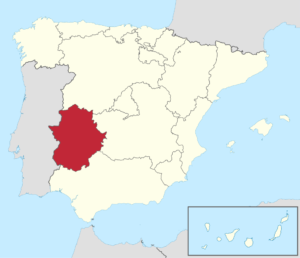
The next autonomous community is Extremadura, located in western Spain, bordering Portugal and Andalusia. This is the poorest community in Spain, with the lowest GDP per capita, but that is a little con against a series of pros this region offers for expat retirees.
Their government offers interesting benefits for foreigners who want to live and invest there—in fact, if we would talk about all of them, it would take some time.
Recommended Cities in Extremadura
The most recommended city in Extremadura for expats and retirees is not their capital, Mérida, which some people say is average, at best. Instead, it is another city that is a bit larger (Mérida is quite small).
It is Cáceres, a city with 96,000 residents that is a UNESCO World Heritage site known for its medieval architecture and vibrant cultural scene.

Since Extremadura is the poorest community in Spain, the cost of living there is much lower than the average, despite being such a pleasant place to live. Basic expenses such as groceries, utilities, and transportation are all lower than in most of Spain. The summers there are hot, but the winters are mild and even pleasant—it is very unlikely to have temperatures below 0°C.
Despite its smaller size, Cáceres has a good healthcare infrastructure. The Hospital San Pedro de Alcántara is a large, modern facility offering a wide range of medical services. Cáceres is also a very, very peaceful place. In fact, Extremadura is remarkably safe, with a homicide rate of just 0.47 per 100,000 residents per year, one of the lowest in Spain.
The biggest downside of Cáceres is that it is not very well connected to the rest of Spain. As of now, there are no high-speed trains departing or arriving from Cáceres. To travel to Madrid, for example, there are some direct trains, but they are not frequent, so in many cases, you need to take two trains or a train and a bus.
This is what a resident told us:
“Cáceres is small and has the mildest winters, but traveling from Cáceres to anywhere in Spain is an odyssey.”
But hidden in this negative aspect, there is a positive point: Yes, it is difficult to travel from Cáceres to the rest of Spain, but it is easy to travel from there to many Portuguese cities! In fact, usually from Cáceres, it is faster to go to Lisbon, the Portuguese capital, than to Madrid!
Remember when I said that the cost of living in Cáceres is lower? From all the places that I have shown you so far, there are no prices as low as in Cáceres. There are apartments for rent for as little as €300, like this 3-bedroom flat with 122 square meters. If you prefer buying, prices are even more impressive! You can buy a 4-bedroom apartment, with a respectable size of 132 square meters (more than 1,400 square feet), in the historic center for just €66,000!
Galicia
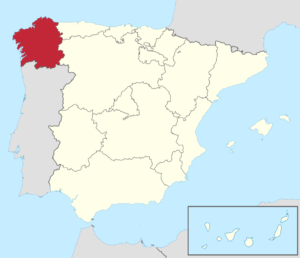
From Extremadura, we go north, to the autonomous community of Galicia, located in the northwest corner of Spain, bordered by the Atlantic Ocean to the west and north. Galicia has a temperate climate with mild winters and not-so-hot summers, an attractive spot for those looking for moderate weather year-round.
The fact that I personally like the most about Galicia is that besides Spanish, they also speak a language called Galego, which is very similar to my language (Portuguese).
Recommended Cities in Galicia
The two most recommended cities in Galicia are Ourense and Vigo. Ourense is the smaller of the two, with a bit more than 100,000 people. It’s very scenic, not expensive, and ideal for those seeking a calm, laidback city. However, residents say it can be boring since not much happens there.
The other is Vigo. Vigo is the largest city in the community, with almost 300,000 residents, and has very good infrastructure and services (except for the public transport, which received some criticism). Vigo is home to several well-regarded medical facilities, including the Álvaro Cunqueiro Hospital, one of the largest and most modern hospitals in Northern Spain.
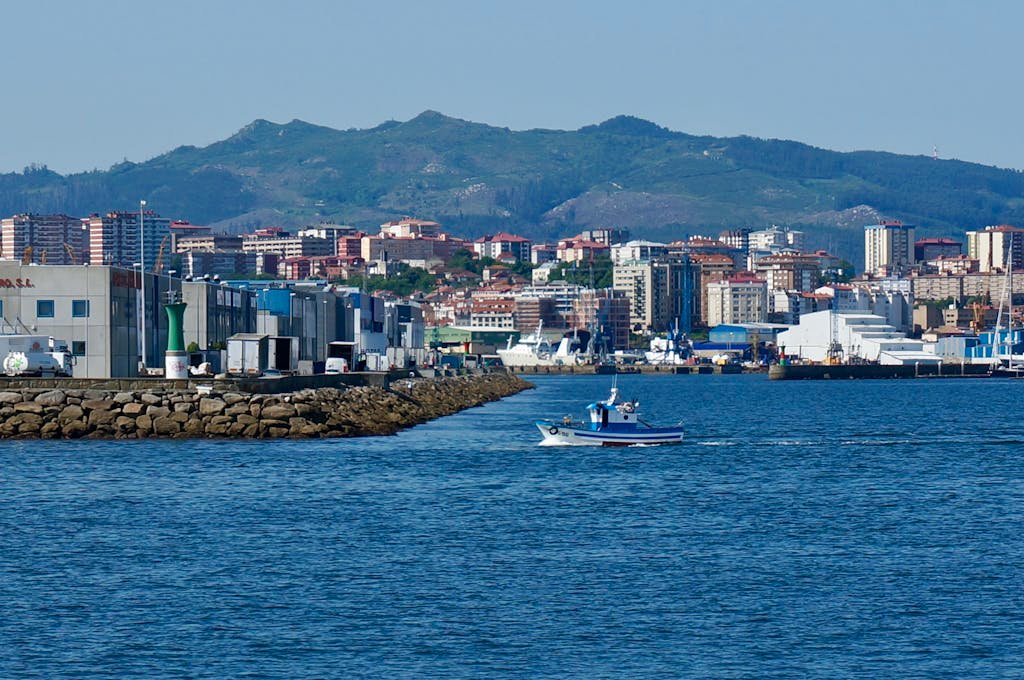
The Vigo-Peinador Airport connects the city to major Spanish cities like Madrid and Barcelona, and to some international destinations. Vigo’s rail station provides access to high-speed trains (AVE) for convenient travel across Spain. One of Vigo’s unique advantages is its proximity to Portugal. The border is less than an hour’s drive away, allowing easy access to Portuguese cities like Porto and Braga.
In terms of the cost of living, it is not the cheapest city in Galicia, however, if you compare Vigo with other cities of the same size in Spain, the cost of living is relatively low.
This is what a local told us about the city:
“Vigo is a really good place. You have good weather almost all year. A lot of good places to eat at reasonable prices. You also have basically anything you need without needing to travel 30 minutes to get what you need.”
Regarding housing prices, there are plenty of apartments for rent for less than €600 per month. For buyers, it is possible to buy a 3-bedroom apartment for just €94,000.
Murcia
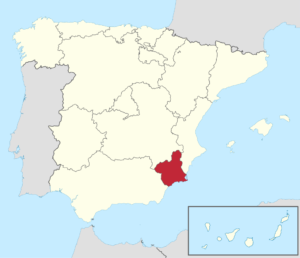
The last autonomous community we will talk about is, maybe, the most attractive of all.
Murcia has a very unique combination that is not found anywhere else in Spain. It is the second cheapest autonomous community in mainland Spain, just slightly higher than Castilla-La Mancha. But unlike Castilla-La Mancha, Murcia is not landlocked; instead, it has a beautiful Mediterranean coastline! Murcia is an autonomous community in the southeast of Spain that experiences more than 300 days of sunshine per year!
It is close to the Valencian community that I covered in a previous article, but the costs in Murcia are in general much smaller since tourism is not so heavy there. The presence of private healthcare options and English-speaking doctors ensures easy accessibility for foreigners.
Recommended Cities in Murcia
The most recommended city in this community is not the famous Cartagena or its largest city, Murcia, but a small town called Águilas, with just 35,000 residents. It has a certain influx of tourists during the summer, but nothing that compares to more popular places in other parts of Spain.
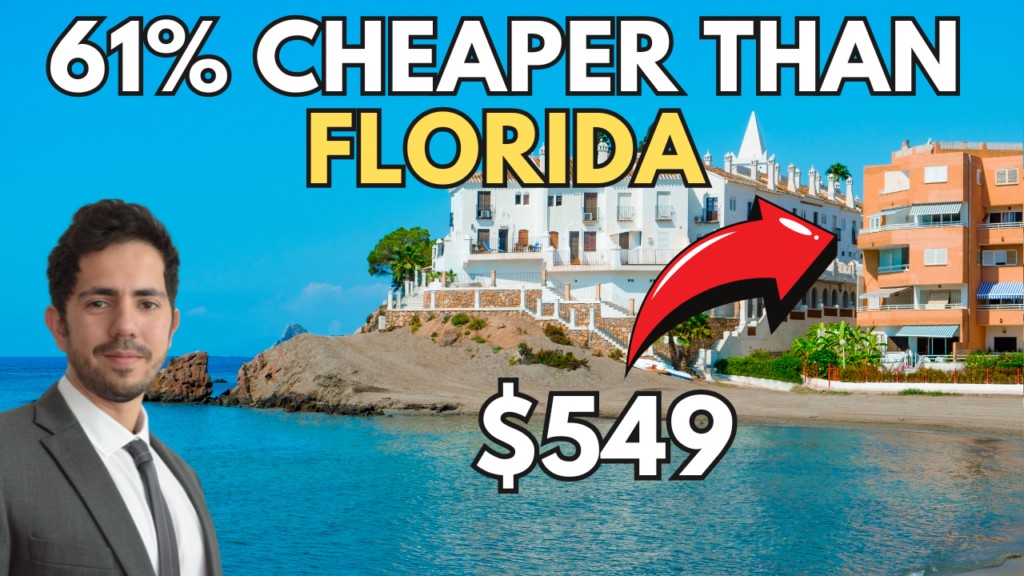
Águilas is well-known for its 35 kilometers of coastline, offering numerous beaches such as Playa de Levante and Playa de la Colonia. These beaches are less crowded than those in larger tourist destinations, providing a more relaxed environment for retirees. In reality, many locals told us that there are even some smaller, desert beaches surrounding the region!
This is what a local from Águilas told us:
“People from Barcelona or Madrid usually look down on people from Murcia. It must be a Spanish insider joke, but my parents have lived happily there for 20 years now. You can probably find some of the country’s most beautiful beaches there. Sierra Nevada for skiing is not too far away. There are beautiful nature parks for hiking, everywhere.”
While having a reasonable healthcare infrastructure for its size, Águilas is just half an hour from a larger city called Lorca, so residents are also not far from the conveniences of urban life. Despite the small size, Águilas has a growing expat community, primarily from the UK and northern Europe, and integration with the locals is easy if you speak some Spanish.
Remember when I said that Águilas, despite having splendid beaches, does not have the same over-tourism as other parts of Spain? The biggest benefit of that is that housing prices there are much lower than in other similar coastal towns!
There are many apartments for rent below €550, just minutes from the beach. If you prefer to buy, and here is maybe the biggest surprise of this entire article: You can buy an entire detached house, with a sea view, for only €100,000! That’s less than $112,000!
For comparison, the cheapest property with a sea view in Fort Lauderdale, Florida, costs more than twice this price, and it is not a house, but a tiny studio! So in my opinion, in terms of cost-benefit, it is hard to find a coastal city that will beat Águilas, Murcia.
Final Thoughts
Now, remember that Spain is a country formed by autonomous communities, and each has its own tax codes and taxation laws, so before any decision, a lot of research is required. This complexity can lead to various real estate challenges for expats in Spain, especially those unfamiliar with the local regulations and procedures. Additionally, navigating the differences in tax incentives and obligations can be quite daunting without professional guidance. Therefore, seeking advice from local experts is crucial to ensure a smooth process and to avoid potential pitfalls.
Also, check out this article about Andalusia on your left, a very attractive autonomous region that I didn’t cover today.
Levi Borba is the founder of expatriateconsultancy.com, creator of the channel The Expat, and best-selling author. You can find him on X here.




